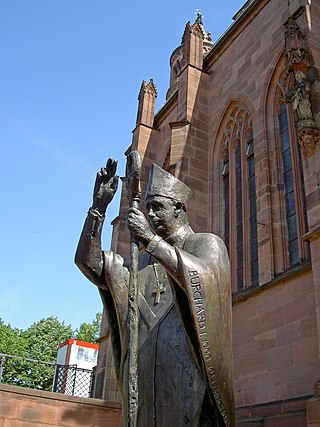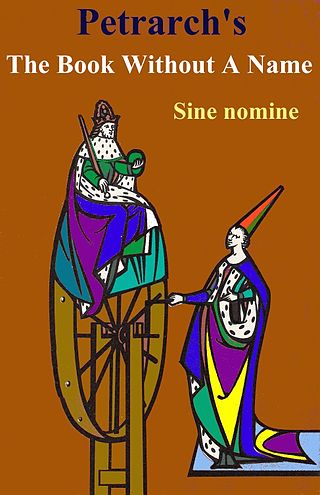Related Research Articles

Saint Michael Choniates was a Byzantine Greek writer and cleric, born at Chonae. At an early age he studied at Constantinople and was the pupil of Eustathius of Thessalonica. Around 1175 he was appointed archbishop of Athens, a position which he retained until 1204. In 1204, he defended the Acropolis of Athens from attack by Leo Sgouros, holding out until the arrival of the Crusaders in 1205, to whom he surrendered the city. After the establishment of Latin control, he retired to the island of Ceos. Around 1217 he moved again to the monastery of Vodonitsa near Thermopylae, where he died on 4 July.

John Gower was an English poet, a contemporary of William Langland and the Pearl Poet, and a personal friend of Geoffrey Chaucer. He is remembered primarily for three major works—the Mirour de l'Omme, Vox Clamantis, and Confessio Amantis—three long poems written in French, Latin, and English respectively, which are united by common moral and political themes.
Adam of Saint Victor was a prolific composer and poet of Latin hymns. A central figure of the sequences in high medieval music, he has been called "...the most illustrious exponent of the revival of liturgical poetry which the twelfth century affords."

Fulbert of Chartres was the Bishop of Chartres from 1006 to 1028 and a teacher at the Cathedral school there. Fulbert was a pupil of Gerbert of Aurillac, who would later become Pope Sylvester II. He was responsible for the advancement of the Nativity of the Virgin's feast day on September 8 and for one of the many reconstructions of the Chartres Cathedral. Most of the information available about him comes from letters he wrote to secular and religious figures between 1004 and 1028.

Godfrey Giffard was Chancellor of the Exchequer of England, Lord Chancellor of England and Bishop of Worcester.
Raymond of Aguilers was a participant in and chronicler of the First Crusade (1096–1099). During the campaign he became the chaplain of Count Raymond IV of Toulouse, the leader of the Provençal army of crusaders. His chronicle, entitled Historia Francorum qui ceperunt Iherusalem, which he co-wrote with Pons of Balazun, ends with the events immediately following the capture of Jerusalem in 1099.

The Archdiocese of Reims or Rheims is a Latin Church ecclesiastic territory or archdiocese of the Catholic Church in France. Erected as a diocese around 250 by Sixtus of Reims, the diocese was elevated to an archdiocese around 750. The archbishop received the title "primate of Gallia Belgica" in 1089.
Baldric of Dol was prior and then abbot of Bourgueil from 1077 to 1106, then made bishop of Dol-en-Bretagne in 1107 and archbishop in 1108 until his death. He fulfilled his monastic duties by travelling to attend Church councils and writing of poetry and history, his most influential piece being a historical account of the First Crusade.

Burchard of Worms was the bishop of the Imperial City of Worms, in the Holy Roman Empire. He was the author of a canon law collection of twenty books known as the Decretum, Decretum Burchardi, or Decretorum libri viginti.
Manasses I, known as Manasses de Gournay, was the Archbishop of Reims, and thus primate of France, from c. 1069 to his deposition on 27 December 1080.
John Blund was an English scholastic philosopher, known for his work on the nature of the soul, the Tractatus de anima, one of the first works of western philosophy to make use of the recently translated De Anima by Aristotle and especially the Persian philosopher Avicenna's work on the soul, also called De Anima. He taught at Oxford University along with Edmund of Abingdon. David Knowles said that he was "noteworthy for his knowledge of Avicenna and his rejection of the hylomorphism of Avicebron and the plurality of forms.", although the problem of the plurality of forms as understood by later scholastics was not formulated explicitly in Blund's time. Maurice Powicke calls him the "first English Aristotelian."
Manasses II, was the Archbishop of Rheims (1096–1106), most significantly at the time of the First Crusade and the Crusade of 1101.
Moralium dogma philosophorum is a Latin work of the 12th century. Its authorship is uncertain: it has been attributed to William of Conches, to Walter of Châtillon and to Alan of Lille. Parallels exist between this work, the anonymous Ysagoge in theologiam, and the text De virtutibus et vitiis by Alan of Lille.
Nationality words link to articles with information on the nation's poetry or literature.

The Liber sine nomine is a collection of nineteen personal letters written in Latin by the fourteenth century Italian poet and Renaissance humanist Petrarch. The letters being harshly critical of the Avignon papacy, they were withheld from the larger collection of his Epistolae familiares and assembled in a separate book. In this fashion, Petrarch reasoned, a reader could throw away this collection, and the other letters to friends could be preserved for posterity.

Philippe de Cabassole or Philippe de Cabassoles (1305–1372), the Bishop of Cavaillon, Seigneur of Vaucluse, was the great protector of Renaissance poet Francesco Petrarch.

Richard Swinefield was a medieval Bishop of Hereford, England. He graduated as a doctor of divinity before holding several ecclesiastical offices, including that of Archdeacon of London. As a bishop, he dedicated considerable efforts to securing the canonisation of Thomas de Cantilupe, his predecessor, for whom he had worked during his lifetime. Active in his diocese, he devoted little time to national political life. He was noted for his hostility to Jews and demanded their removal from Christian society, and ultimately, from England. He was buried in Hereford Cathedral where his memorial still stands.

The School of Reims was the cathedral school of Reims Cathedral in France that was in operation during the Middle Ages. The term is also used of an artistic style in Carolingian art, lasting into Ottonian art in works such as the gold relief figures on the cover of the Codex Aureus of Echternach, which in fact were probably made in Trier in the 890s. Archbishop Ebbo promoted artistic production at the abbey at Hautvillers, near the city. Major works probably made there in the 9th century include: the Ebbo Gospels (816–835), the Utrecht Psalter, which was perhaps the most important of all Carolingian manuscripts, and the Bern Physiologus.
Roberto Weiss was an Italian-British scholar and historian who specialised in the fields of Italian-English cultural contacts during the period of the Renaissance, and of Renaissance humanism.
Helinand was the bishop of Laon from 1052 to 1098.
References
- ↑ "Godfrey of Rheims, a Humanist of the Eleventh Century." John R. Williams. Speculum. Vol. 22, No. 1 (Jan., 1947), pp. 29-45 (17 pages) Published by: The University of Chicago Press on behalf of the Medieval Academy of America
- ↑ "The Cathedral School of Rheims in the Eleventh Century". John R. Williams Speculum. Vol. 29, No. 4 (Oct., 1954), pp. 661-677 (17 pages) Published by: The University of Chicago Press